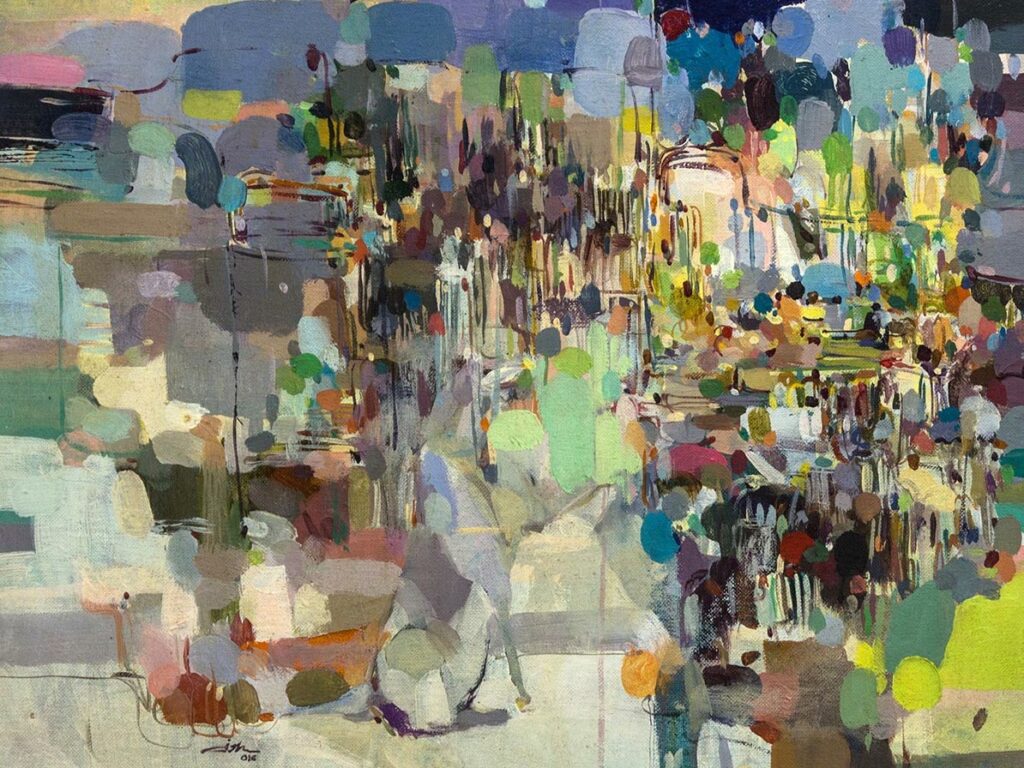Circle Art Gallery, Nairobi, Kenya
05 May 2017 - 23 May 2017

Miska Mohmmed, In the City, 2016, Oil on canvas, 51 x 51 cm
Circle Art Gallery presents Khartoum Contemporary.
This exhibition presents a range of work and artistic ideas spanning the past 50 years. The artists in this show have all studied, and many of them have also taught, at the College of Fine and Applied Arts in Khartoum, which has played a central role in the movement of modern and contemporary art in Sudan. Many Sudanese artists have relocated internationally, including a number who have become integral to the art scene here in Nairobi; all those in this show, however, are now predominantly living and working in Sudan.
The collection of works demonstrates the continuing relevance to contemporary Sudanese artists of the ideas which were developed by the early Khartoum School; of constructing a distinct aesthetic language, used to navigate and visualize complex cultural identity. However, the selection also reflects the diversity of directions artists have taken, and challenges they have made, to these central ideas.
Kamala Ishaq is one of Sudan’s foremost modernist painters and remains very influential today. She was the leader and co-founder of the movement known as the Crystallist Group, which challenged the traditional male perspective of the Khartoum School in the late 1970s. Her own work has been influenced by her study of the woman-centred cult of the Zar, which has roots across the horn of Africa, and whose spiritual and women-only ceremonies have become a part of contemporary urban culture.
Also practising during the dynamic period of the 1970s, and making influential work, deeply embedded in Sudanese heritage, were artists such as Abdel Basit El Khatim and Mohamed Abdella Otaybi. Otaybi’s early work was very much immersed in the ideas of the ‘old’ Khartoum School and, although his painterly language has developed, the use of architectural and decorative motifs and calligraphic forms can still be seen in these recent paintings.
The practices of artists such as Rashid Diab and Salah Elmur, although still overlapping with the concerns of the artists before them, are more engaged with global art movements and techniques. These monotype prints of Diab’s, from the 1990s and early ‘00s were completed in Madrid, where Diab lived, studied and taught for many years. Elmur’s symbolic and semi-narrative paintings reflect a departure from the formal and skills-based training of the College. His use of glass boxes as a tool for exploring how light transforms colour and texture seem to draw connections to the themes of Ishaq’s Crystallism. His portraits of individuals and family groups are inspired by his collection of formal studio photographs popular in the 1960s and ‘70s in Sudan.
Emerging artists, such as Amel Bashir and Elhassan Elmountasir, are producing work in a new socio-political framework. They inherit the legacy of the Sudanese artists who have come before them, as well as looking outward, forging connections with international contemporary artists and ideas.
– Bryony Bodimeade